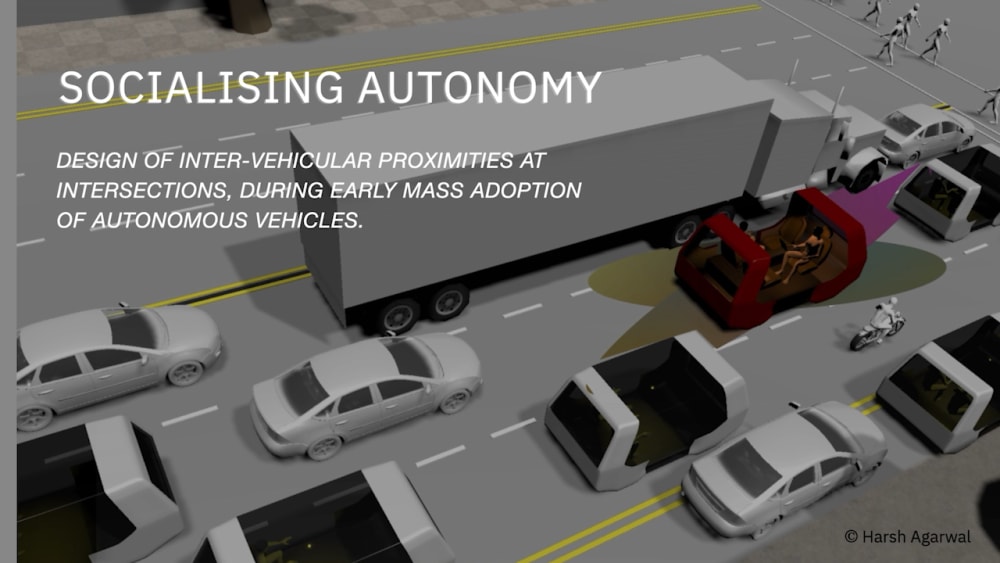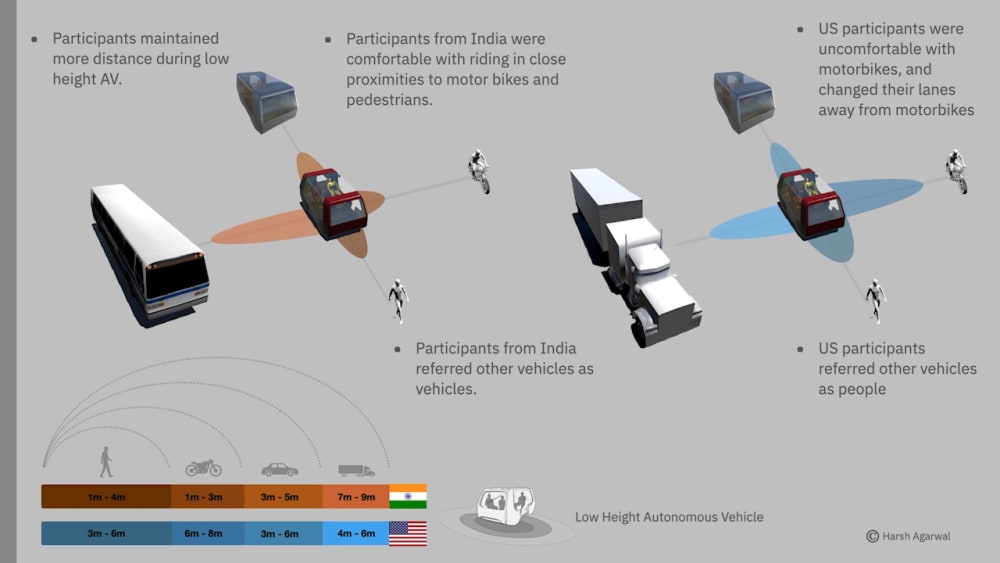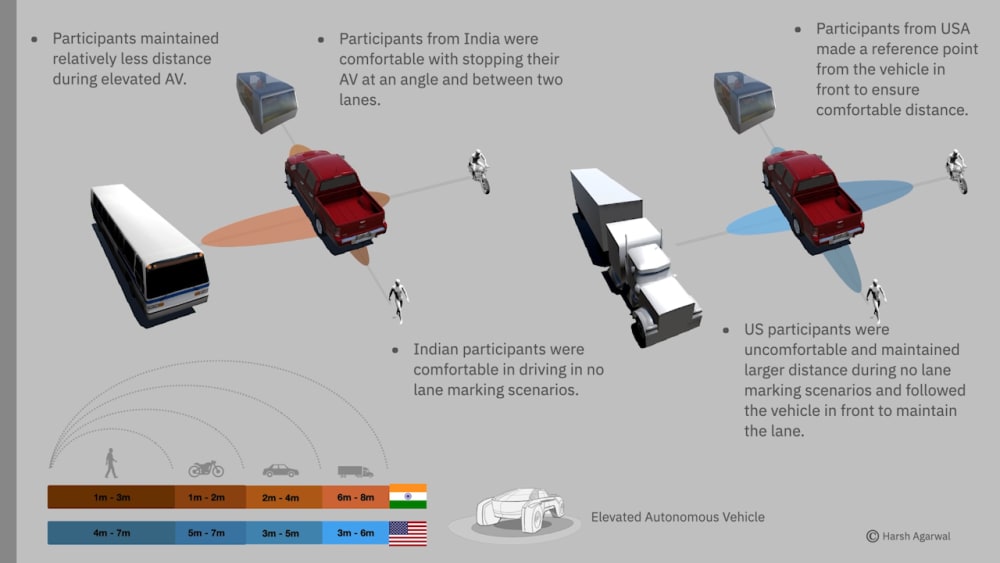The Impact of Socialising Inter-Vehicular Autonomy - Understanding the impact of cultural norms on inter-vehicular proximity (distance between two vehicles) in the early days of the mass adoption of autonomous vehicles.
The American anthropologist, Edward T Hall, first studied that "Humans have an innate distancing mechanism, modified by culture, that helps to regulate contact in social situations." In his well-known Interpersonal distance model, he quantified the social proximity zones for individuals in the United States.
It's fascinating how this bubble of proximity zones is not limited to standalone individuals but also transcends to inter-vehicular proximity when they travel in personal vehicles.
These vehicle proximity zones differ culturally; for example, the distance between two vehicles in the United States is much higher than the inter-vehicular distance in India. The fluidity in these inter-vehicular trends begs the questions: How will the personal proximity zones be affected when traveling in automated vehicles? And will the proximity zones be standard all across the globe?
My project is a deep dive into quantifying the proximity zones for autonomous vehicles in India and the United States. I built a scaled digital model, and traffic flow scenarios of four-way intersections of Pasadena and New Delhi. I employed virtual reality software using Unity to simulate an environment for immersive and intuitive testing. In the four scenarios I tested, I found:
There are low height autonomous vehicle scenarios for India where participants have less proximity to pedestrians (1m - 4m), motorbikes (1m - 3m), and cars (3m - 5m) and more proximity with semi-trucks (7m - 9m).
There are low height autonomous vehicle scenarios for the United States, where participants have different perspectives towards traffic as compared with Indian participants. They have similar proximity boundaries towards pedestrians and cars (3m - 6m) and have higher proximity boundaries towards semi-trucks (4m - 6m) and motorbikes (6m - 8m).
For the elevated autonomous vehicle scenario in the United States, participants have higher proximity boundaries for motorbikes (5m - 7m), then pedestrians (4m - 7m), and approximate similar proximity boundaries for cars (3m - 5m) and semi-trucks (3m - 6m).
Elevated autonomous vehicle scenario for India were participants from India had an elevated and hubris perspective when it came to elevated autonomous vehicles. Participants have relatively less proximity with pedestrians (1m - 3m), motorbikes (1m - 2m), and cars (2m - 4m) and higher proximity boundaries with semi-trucks (6m - 8m).
Overall, my research on socialising the inter-vehicular autonomy unfolds how the socio-cultural factors impact the mass adoption of AV's proximity zones or proximity limits among the vehicles. We must consider that proximity zones cannot be standard across the globe because the cultural values specified in the context of personal space and spatial behaviour are important factors for adopting AV's better.
Like this entry?
-
About the Entrant
- Name:Harsh Agarwal
- Type of entry:individual
- Software used for this entry:Unity, Photoshop, AfterEffects, Maya, VeRed
- Patent status:none








